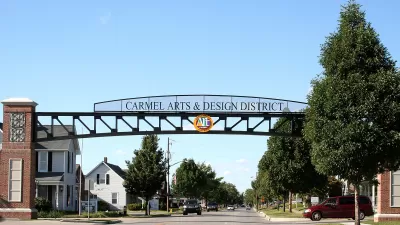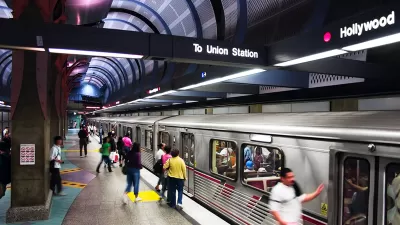A detailed case study of Kokomo, Indiana, which has achieved an impressive record of investments in streetscape and other capital projects, even as it struggled to deal with the effects of the recession.
Aaron M. Renn examines the case of Kokomo, Indiana, a small industrial city of 57,000 people 45 miles north of Indianapolis, to test the "cut to invest" paradigm supported by Bruce Katz at the Brookings Institution. "The idea is to cut spending on operations and lower priority items in order finance investments in higher priority infrastructure or other projects."
Here Renn summarizes recent changes in Kokomo:
What I discovered is that Kokomo has done a lot more than just build a trail. They’ve deconverted every one way street downtown back to two way, removed every stop light and parking meter in the core of downtown, are building a mixed use downtown parking garage with a new YMCA across the street, have a pretty extensive program of pedestrian friendly street treatments like bumpouts, as well as landscaping and beautification, a new baseball stadium under construction, a few apartment developments in the works, and even a more urban feel to its public housing.
Renn notes that all of these projects were achieved with an admirable attention to design details and while paying in cash. The article goes on to provide images and detailed analysis of the choices the leadership of Kokomo has made in deciding to invest and where to cut.
FULL STORY: Cutting To Invest In Kokomo, Indiana

Alabama: Trump Terminates Settlements for Black Communities Harmed By Raw Sewage
Trump deemed the landmark civil rights agreement “illegal DEI and environmental justice policy.”

Study: Maui’s Plan to Convert Vacation Rentals to Long-Term Housing Could Cause Nearly $1 Billion Economic Loss
The plan would reduce visitor accommodation by 25% resulting in 1,900 jobs lost.

Why Should We Subsidize Public Transportation?
Many public transit agencies face financial stress due to rising costs, declining fare revenue, and declining subsidies. Transit advocates must provide a strong business case for increasing public transit funding.

Wind Energy on the Rise Despite Federal Policy Reversal
The Trump administration is revoking federal support for renewable energy, but demand for new projects continues unabated.

Passengers Flock to Caltrain After Electrification
The new electric trains are running faster and more reliably, leading to strong ridership growth on the Bay Area rail system.

Texas Churches Rally Behind ‘Yes in God’s Back Yard’ Legislation
Religious leaders want the state to reduce zoning regulations to streamline leasing church-owned land to housing developers.
Urban Design for Planners 1: Software Tools
This six-course series explores essential urban design concepts using open source software and equips planners with the tools they need to participate fully in the urban design process.
Planning for Universal Design
Learn the tools for implementing Universal Design in planning regulations.
Caltrans
Smith Gee Studio
Institute for Housing and Urban Development Studies (IHS)
City of Grandview
Harvard GSD Executive Education
Toledo-Lucas County Plan Commissions
Salt Lake City
NYU Wagner Graduate School of Public Service





























